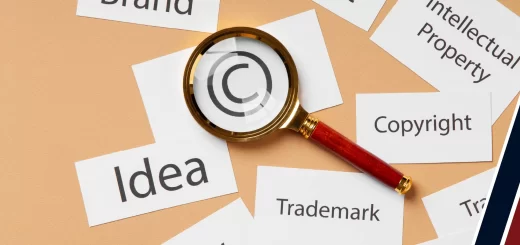What can be the Subject of a Patent?
One of the most common questions that we encounter while dealing with inventions and discoveries is the patentable subject matter. The question of whether a particular subject matter is patentable is one of the substantive requirements for patentability and thus it is important for an applicant to determine right at the beginning that their invention falls under any of these patentable subject matter categories. This is important because the laws or patent practices of many countries provide that certain subject-matter is excluded from patentability, even if the invention is novel and non-obvious. subject of a patent
An abstract and purely intellectual idea is generally not patentable. Let’s take the example of raw materials like iron ore, these are the materials which have always existed (undiscovered) in nature and are not patentable, but a process to isolate or extract this material may be an invention. The isolated / purified material itself is also potentially patentable. subject of a patent
A literary, dramatic, musical or artistic work or any other aesthetic creation whatsoever is not patentable. However, authors can copyright their literary works to exclude others from using their work without their consent. subject of a patent
A theory as to how and why a known process works in the way it does is not patentable. However, a better understanding of the mechanism behind the process may lead to improvements being made. Those improvements would be patentable subject-matter.
All we can say is that applicants should remain acquainted with these patentable subject matters prior to investing their hard earned money on their research and development works otherwise they may end up with reinventing the wheel and their whole attempt will be an exercise in futility. Below are the patentable subject matters that inventions should fall into and inventions that are beyond the scope of these categories are generally tough to be protected. subject of a patent
Various Patentable Subject Matters are:
1. Mechanical Devices and Articles of Manufacture- A mechanism consisting of a device that works on mechanical principles fall under this category and are one of the most active categories in the arena of patenting. Some of the common examples of machines are:
A. Broadcaster- a mechanical device for scattering something seed or fertilizer or sand etc. in all directions
B. Bumpers- a mechanical device consisting of bars at either end of a vehicle to absorb shock and prevent serious damage
C. Compressor- a mechanical device that compresses gasses
D. Carburetor- mixes air with gasoline vapor prior to explosion
E. Copyholder- mechanical device used in printing; holds the copy for the compositor
2. Process/Methods- a procedure or process for attaining an object is called as a process or a method. In the United States patent law, a method, also called “process”, is one of the four principal categories of things that may be patented through “utility patents”. While the terms method and process are largely interchangeable, a method usually refers to a way to use a product to accomplish a given result, and a process usually refers to a series of steps in manufacture. For example, the process of making soap can be regarded as a process patent. Similarly, the process of manufacturing aspirin for curing headache can be regarded as a process patent.
3. Chemical Compositions or Compounds- A chemical compound (or just compound if used in the context of chemistry) is an entity consisting of two or more atoms, at least two from different elements, which associate via chemical bonds. Patents are granted to these novel chemical entities or methods to manufacture them. And these are also called as a chemical patent; pharmaceutical patent or drug patent depending on the nature of the product. subject of a patent
4. Isolated and Characterized Molecules- Over the years, a number of sophisticated analytical and preparative techniques have been developed for separating, analyzing, and isolating the various macromolecular constituents of cells and tissues. These isolated macromolecular constituents can be patented and are one of the most patented categories. subject of a patent
In other words, we can say is that a novel isolated molecule is a patentable subject matter and can be protected under various patent laws including the United States. Isolated and characterized molecules can be proteins, carbohydrates, lipids, and nucleic acids.
5. Genetic Organisms/Gene Sequences- Biotechnology is one of the most promising fields of technology, especially since molecular biology methods have enhanced our knowledge of genes, their structure, and their action. This knowledge makes it possible to change genetic material and construct new varieties of cultural plants and animals for various purposes such as nutrition, scientific and medical experimentation, and treatment of human diseases. Such inventions may even include human genes. subject of a patent
6. Computer programs- Patenting computer programs has been a matter of debate since last few years and many arguments have been put in place to justify or oppose its patentability. However, according to WIPO computer programs are patentable to the extent that the International Searching Authority (or International Preliminary Examining Authority) is not equipped to search prior art (or to carry out an international preliminary examination) concerning such programs. subject of a patent
7. Improvements- Improvement and new use patents are for inventions that improve on or feature new uses for existing inventions. Improvement patents can add something to an existing product, incorporate new technology into an old product, or find a new use for an existing product. subject of a patent
Read more such patent-related blogs on Sagacious Blog or contact us to avail our patent search services.




